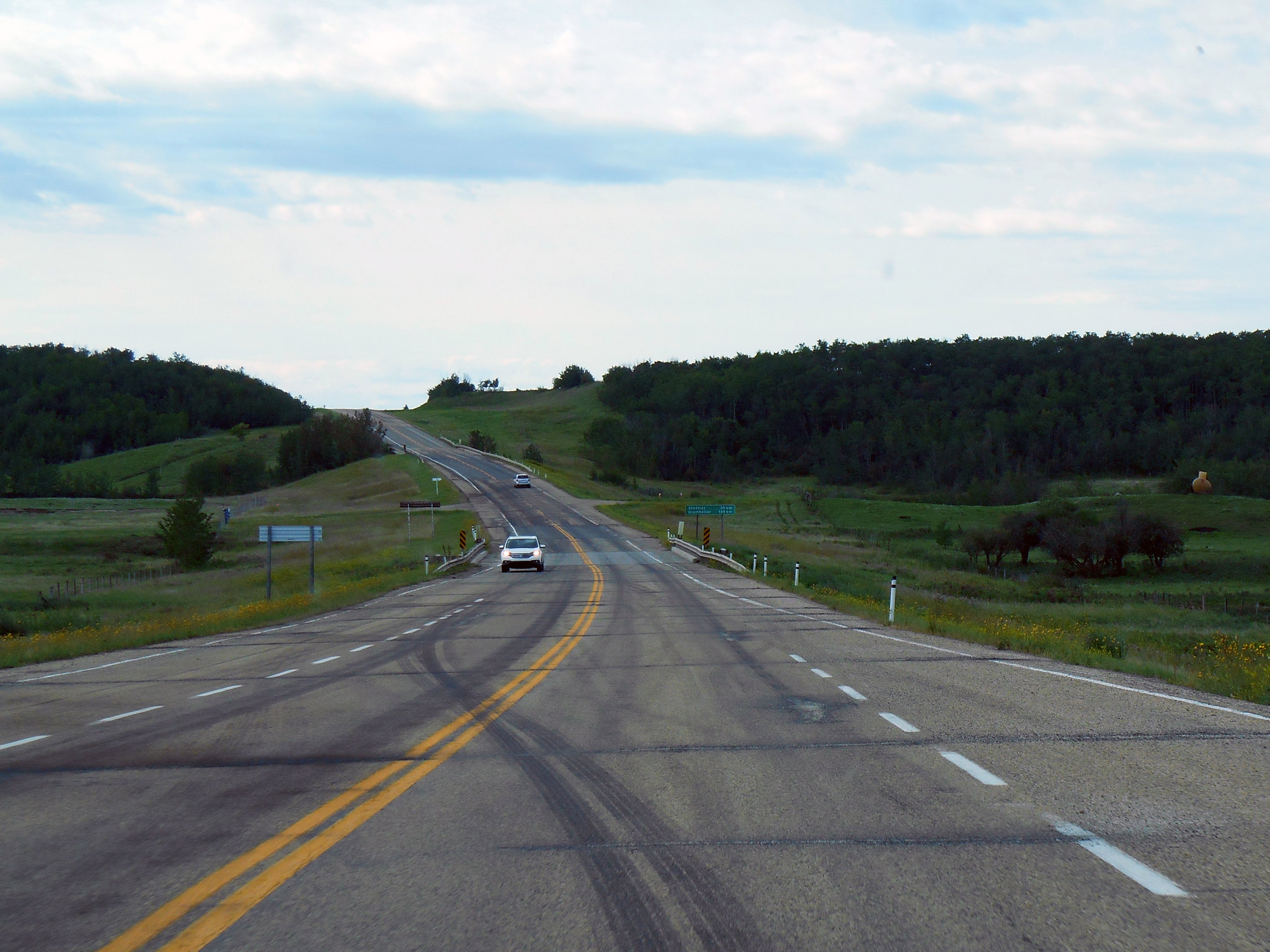Proper civil design and construction of roads and highways will maximize the service life of our infrastructure. Civil engineers will factor in the expected traffic volume and weight, as well as the Canadian climate and specific geology of the area. Adequate drainage and a strong durable foundation are equally important. Here are additional key factors that extend the service life of roads:
Preventative Maintenance
Regular road maintenance such as crack sealing, pothole repair, and pavement resurfacing can help extend the life of a road by preventing further damage and deterioration. In Edmonton, road repair happens year-round but gets busier during Spring as the snow melts and annual spring sweeping takes place.
Although each municipality is different, the City of Edmonton ranks and prioritizes which holes to fill first by urgency. Depending on the type of road and how busy it is, the size and severity of the hole, and where the potholes are located on roads themselves — will determine when the pothole gets fixed. All pothole complaints made to the City of Edmonton are inspected by city repair crews. High-priority potholes are usually inspected within a day and repaired within two days, while lower priority potholes will be inspected within five days and can take up to one month to fix. Potholes in back alleys take much longer to fill.
Quality Materials and Solid Substrate
High-quality materials should be used in the construction and maintenance of the road to ensure that it can withstand heavy traffic, extreme weather conditions, and other stressors. Quality materials will often compete with project budgets. Quality materials are even more important to withstand Alberta’s extreme temperatures and soil conditions.
Around 11,000 years ago, Alberta was under a 1.5-kilometre-thick glacier. As a result, our province has a high content of soil, silt, clay and sand deposits. Silty or clay foundation tends to absorb water and will make frost heaving more common.
During freezing conditions, there is an upwards expansion of soil caused by an increasing presence of surface ice. This is known as frost heaving. Ice growth requires a water supply in certain soils. The weight of the top layer of soil constrains vertical growth of the ice and promotes the development of lens-shaped areas of ice within the soil. Growing ice lenses has the enough force to lift the soil as much as 12 inches or more. Frost heaving causes significant damage to roads and building foundations.
During the construction phase, the topsoil and organics are completely stripped and replaced with gravel and clay to ensure a quality road base that allows for drainage. Soil stabilizers are also added to the clay base to increase the overall foundation strength permanently. In Alberta, the clay base is mixed with cement to stabilize the soil and then gravel is placed over top and compacted. In the warmer climates, fly ash, lime and bitumen are also used as stabilizers. With proper compaction, frost heaving maintenance repairs will be kept to a manageable level. Unfortunately, you can never eliminate the impact of frost heaving in our extreme Alberta climate.
Hot asphalt, which is used during late spring and summer months is heated to 148 degrees Celsius. The asphalt must be poured quickly after its mixed. The ground must be warm/dry, and the outside temperature must be at least 3 degrees Celsius and rising. On the other hand, winter asphalt is more expensive and takes longer to cure. It is primarily used for patchwork whereas summer asphalt is used for larger areas such as roads, driveways, and parking lots.
Proper Traffic Management
Heavy commercial vehicles and overloaded trucks can cause considerable damage to roads. Proper traffic management can help prevent unnecessary wear and tear on the road. For example, the government implements load weight restrictions during springtime while the soil is thawing out. When the frost comes out of the ground, the ground becomes unstable and as a result, the ground will not hold the weight of a large vehicle.
Climate Considerations and Drainage
Alberta roads are subject to extreme weather conditions, such as heavy rain or snow, may require special considerations for their longevity. For example, our drainage systems may need to be designed to manage large volumes of water and snowmelt. Our roads are subject to the constant freeze thaw cycle. Moisture seeps in cracks and expands which accelerates the deterioration of paved roads and highways.
As the summer months heat up, so will the asphalt and other materials used to make roads. Pavement is vulnerable to high temperatures. One of the best ways to extend the life cycle of roads, and keep future costs down, is to increase the thickness of asphalt on certain roads as much as 7 to 32%. Of course, this comes at a high cost. In Alberta, asphalt thickness on roads ranges from 3 inches (light duty parking lots) to 10 inches in thickness (heavy duty highways).
The civil engineer’s role is ensuring adequate structural design (asphalt thickness) for the soil type/drainage (soil subgrade strength), expected loads and speeds, pavement material characteristics and climate conditions. Early intervention to preserve existing infrastructure is expensive but far more cost effective than rebuilding an entire road. Overall, a combination of proper design, construction, maintenance, and traffic management can help ensure that a road lasts as long as possible.
Since 2007, Bolson Engineering and Environmental Services has designed and developed a variety of roads, parking lots and highway developments. Our balanced project management approach makes a noticeable difference in our projects. Contact us to discuss your vision.

